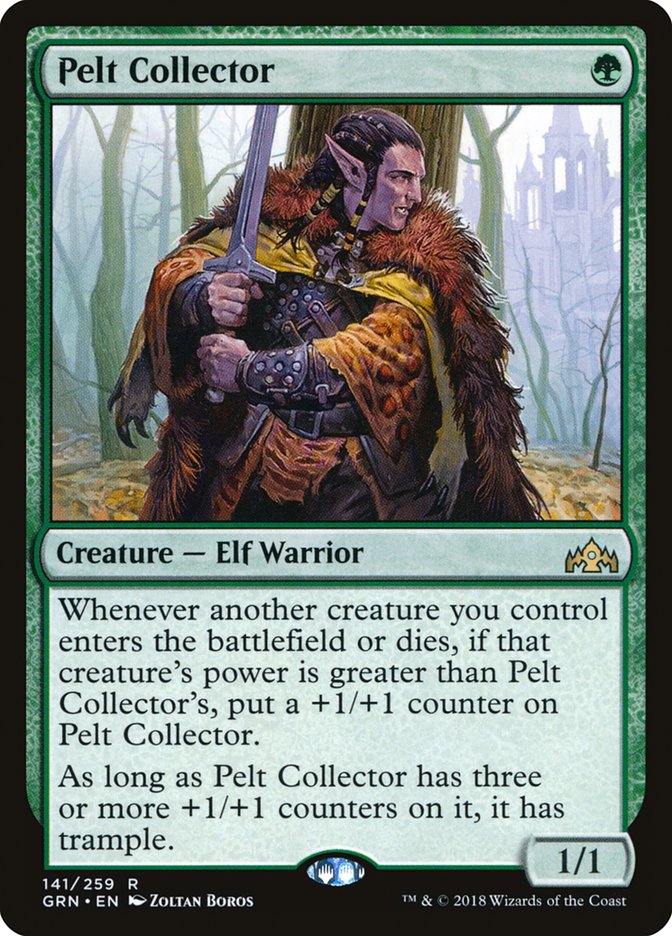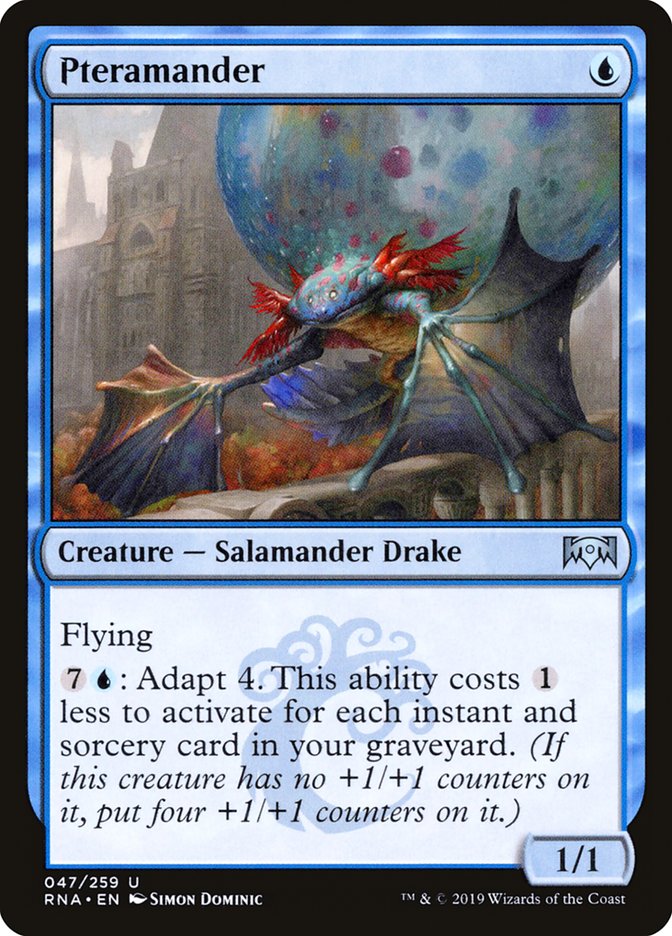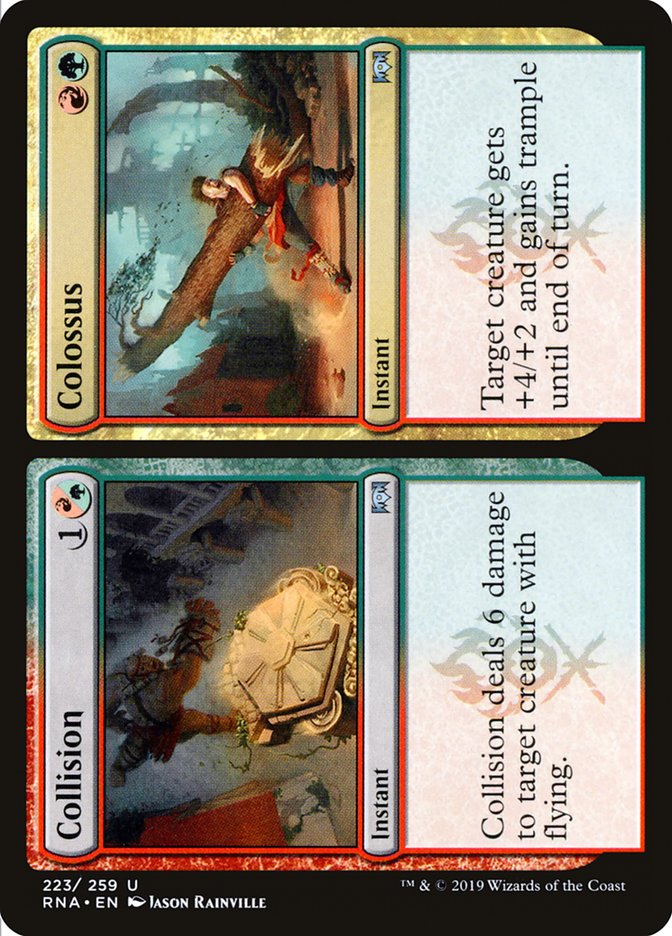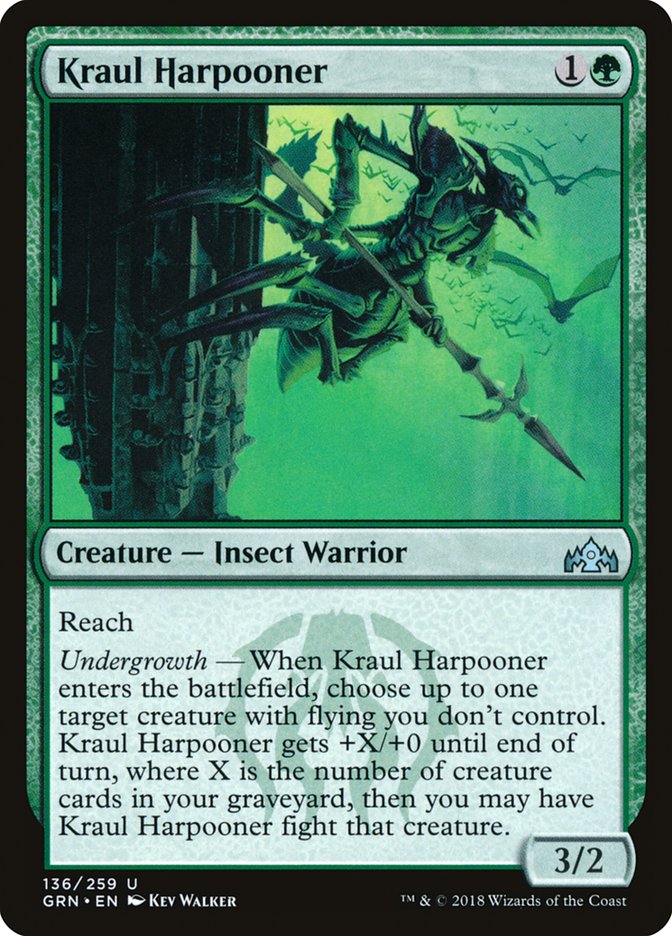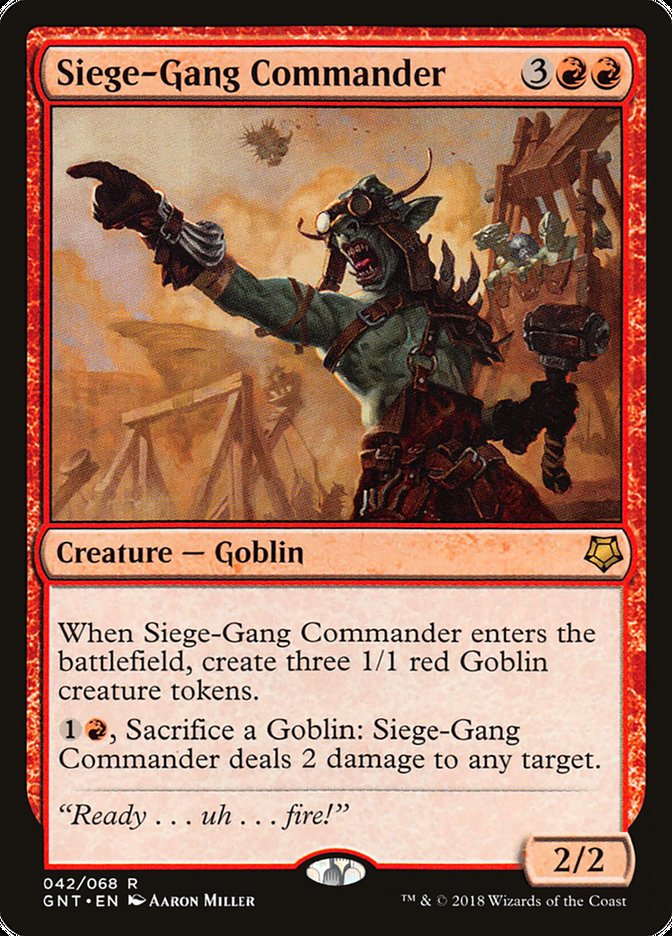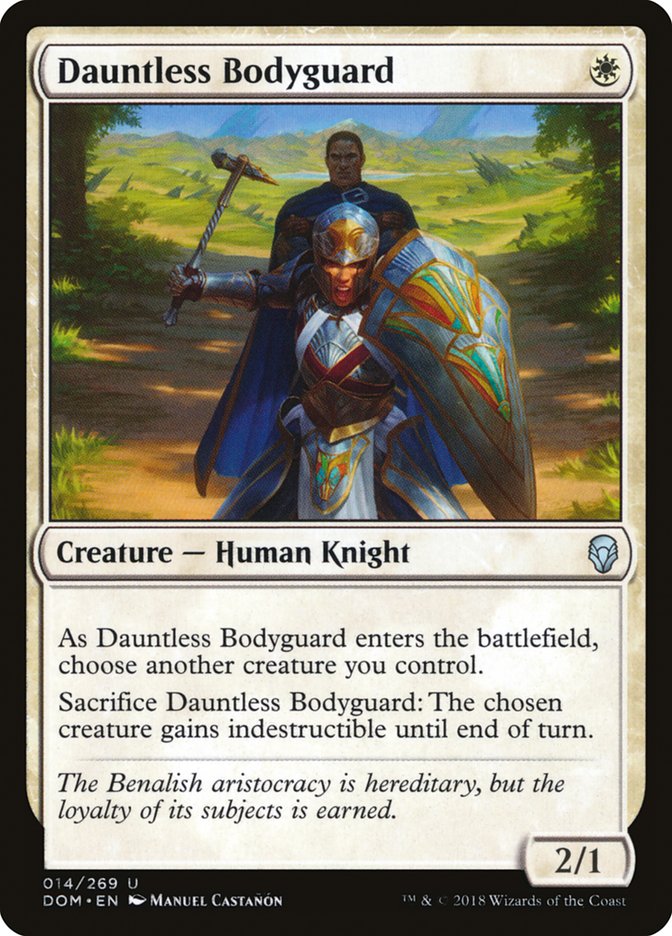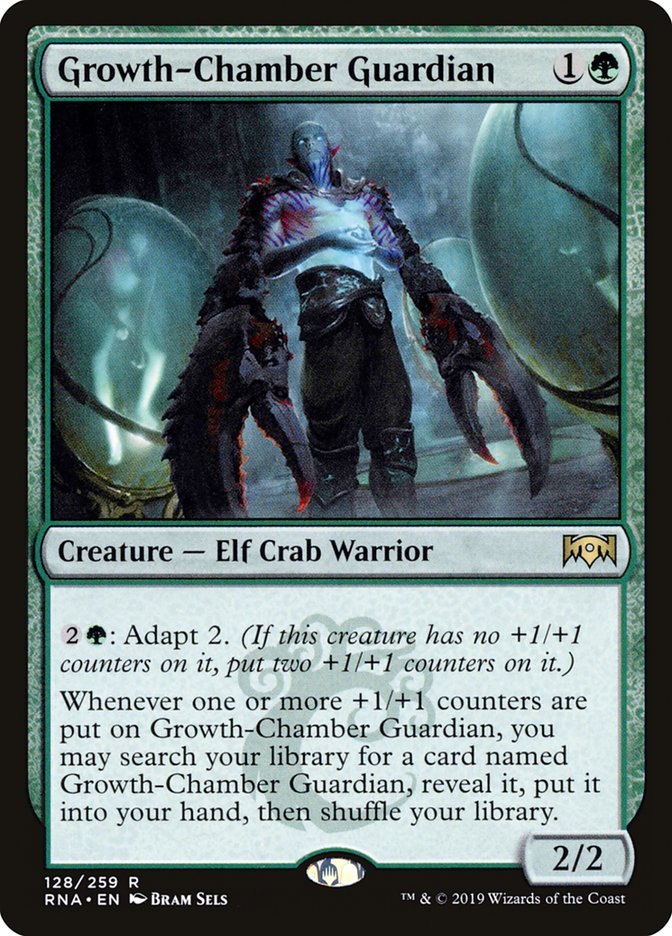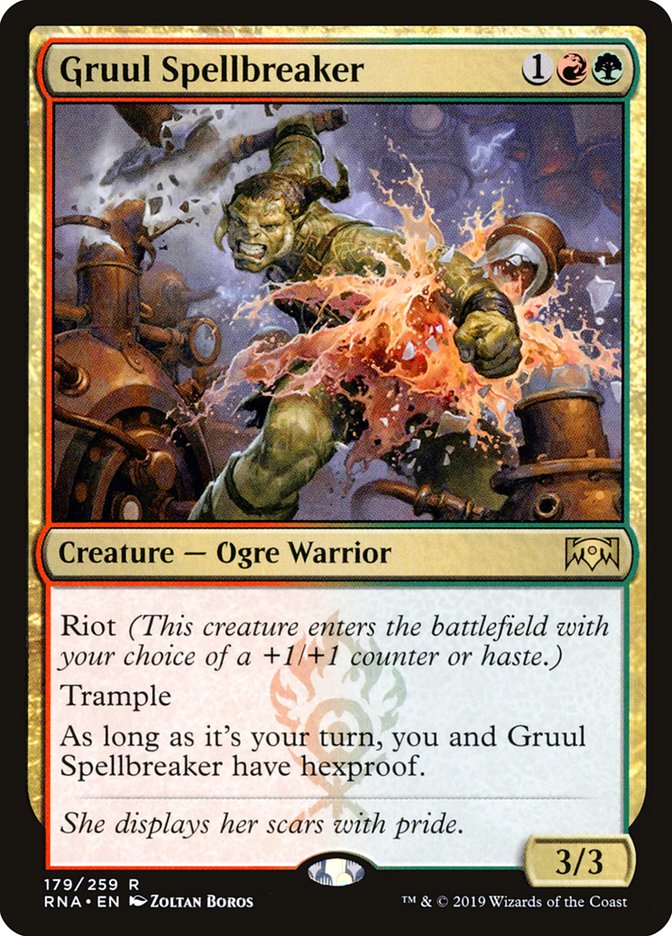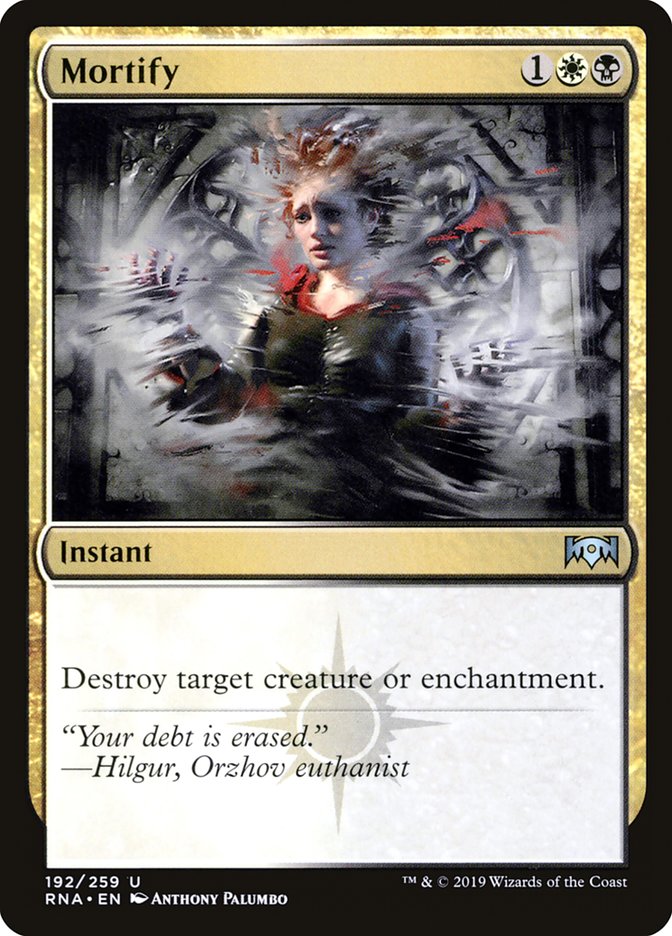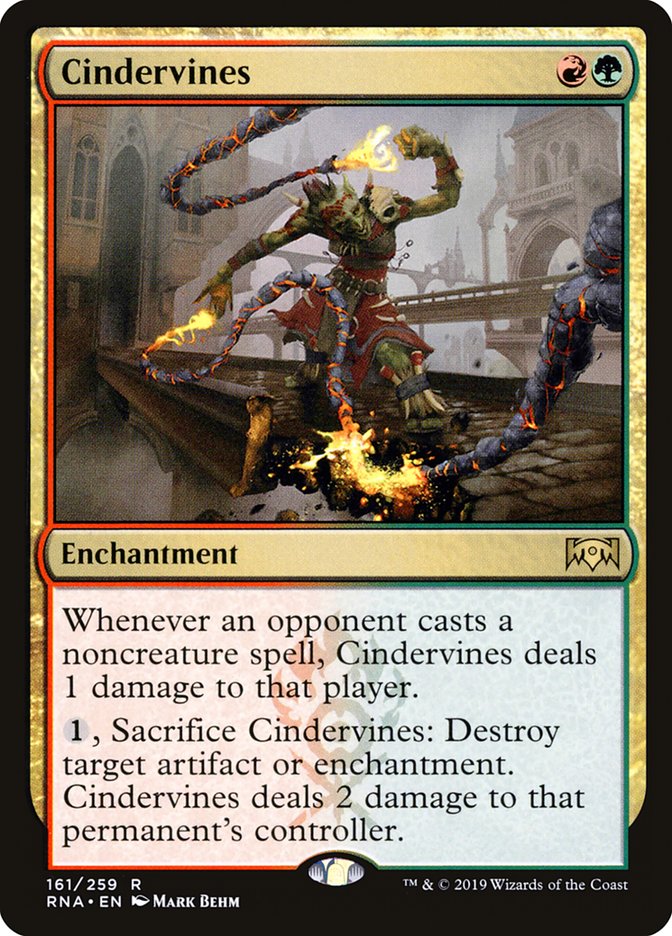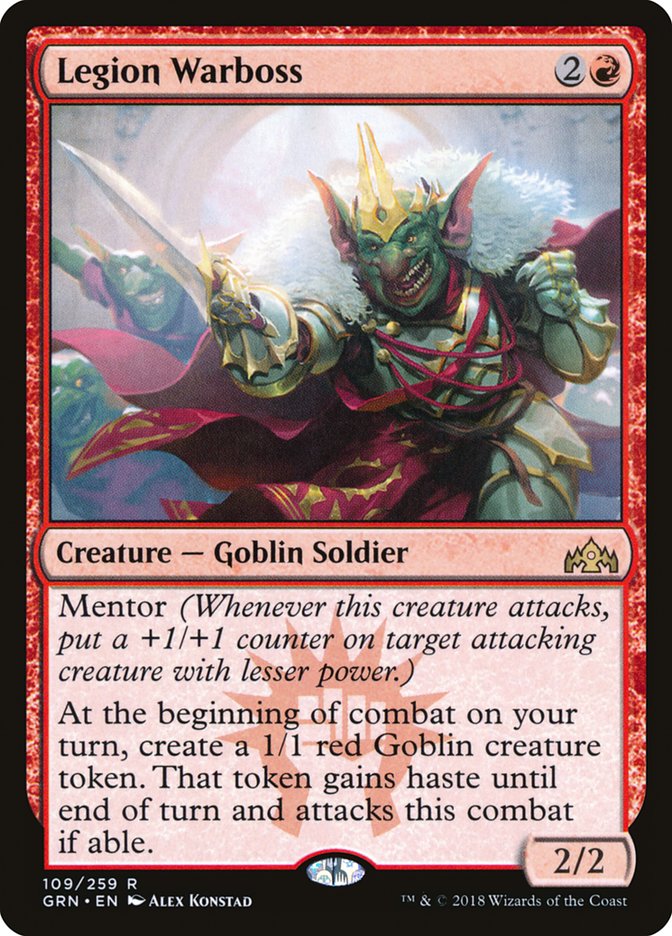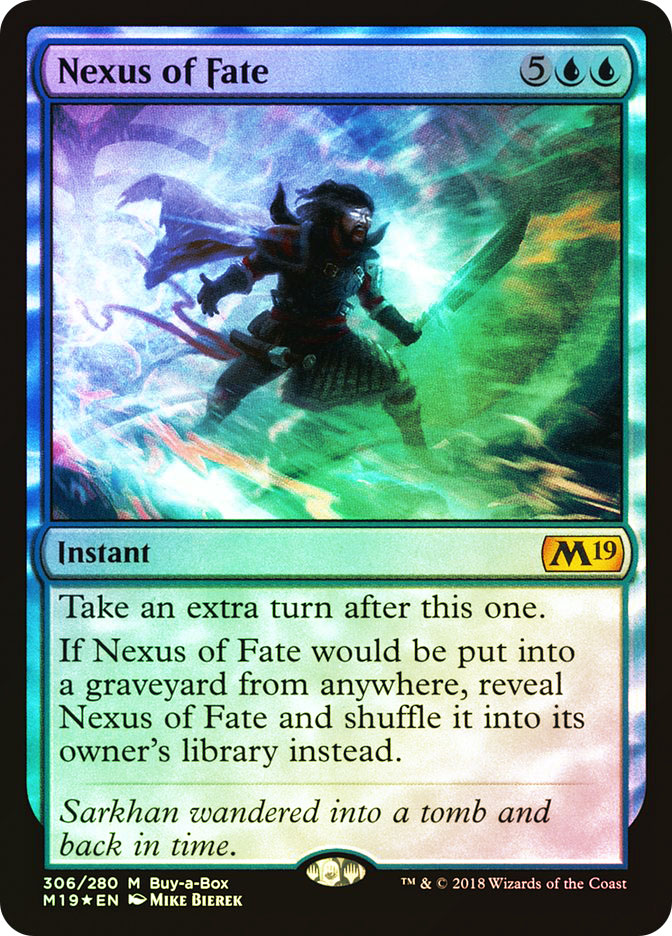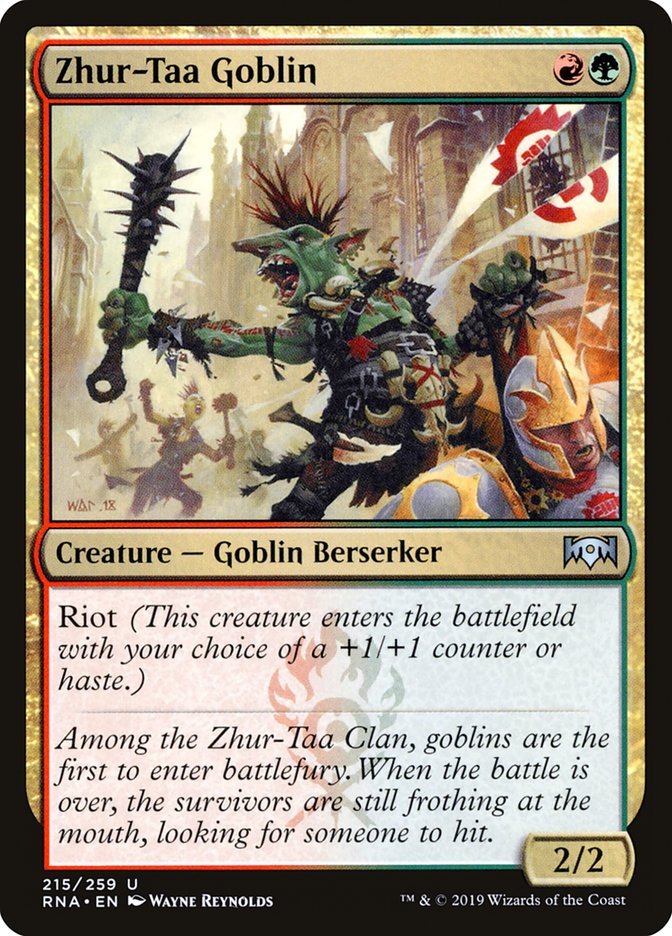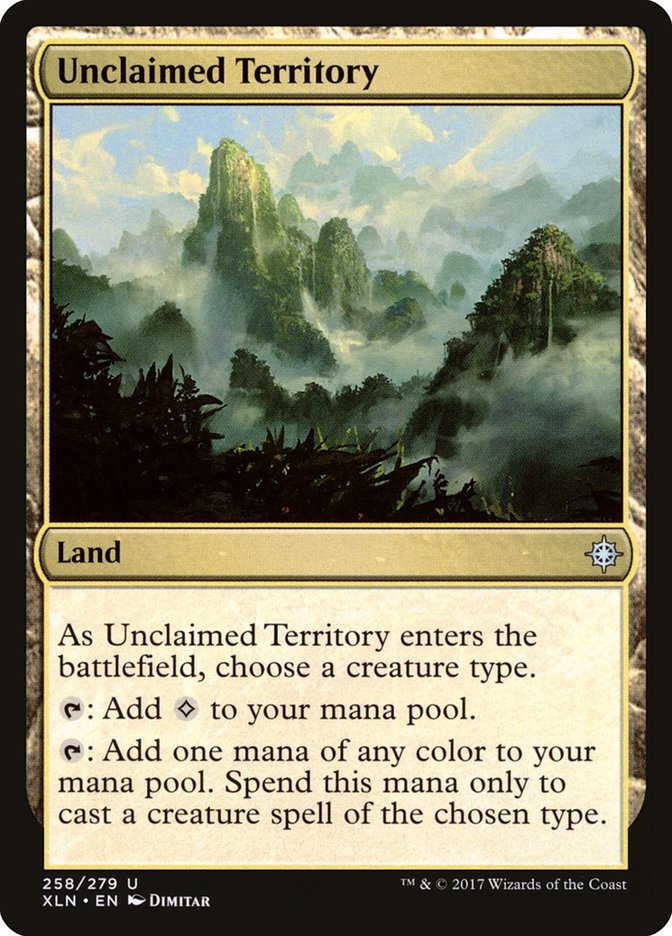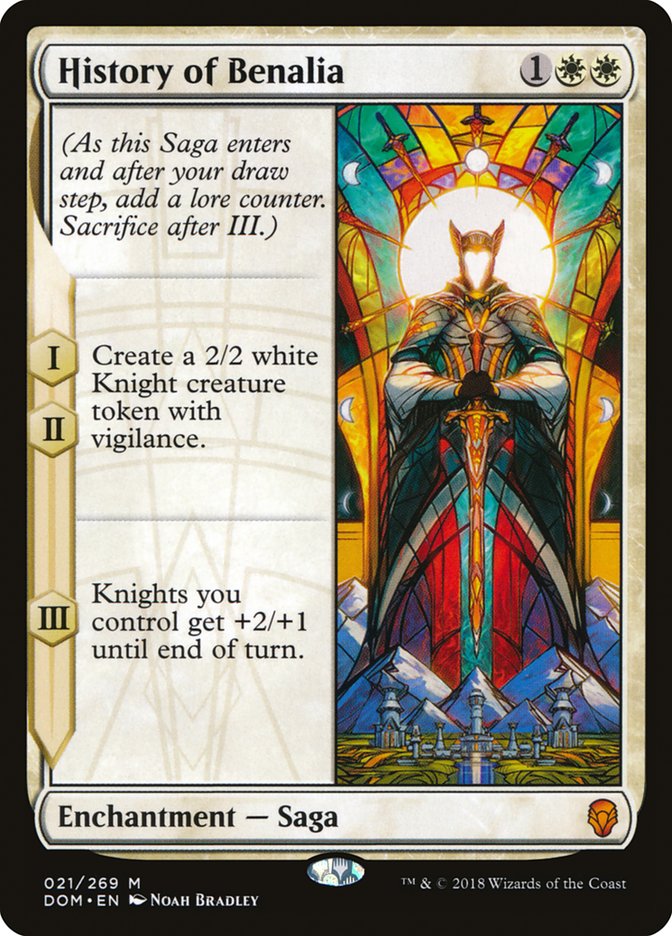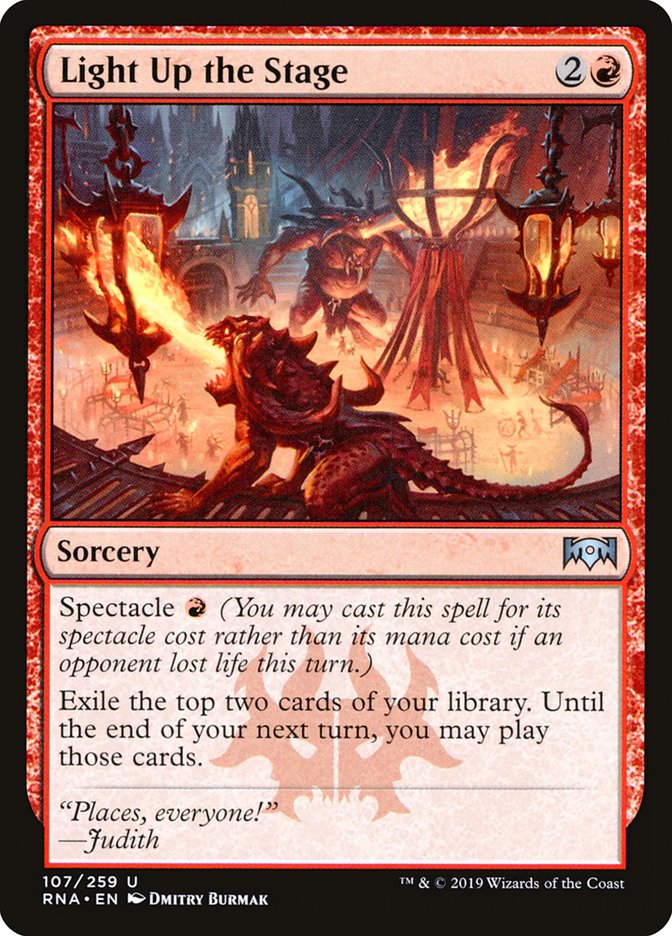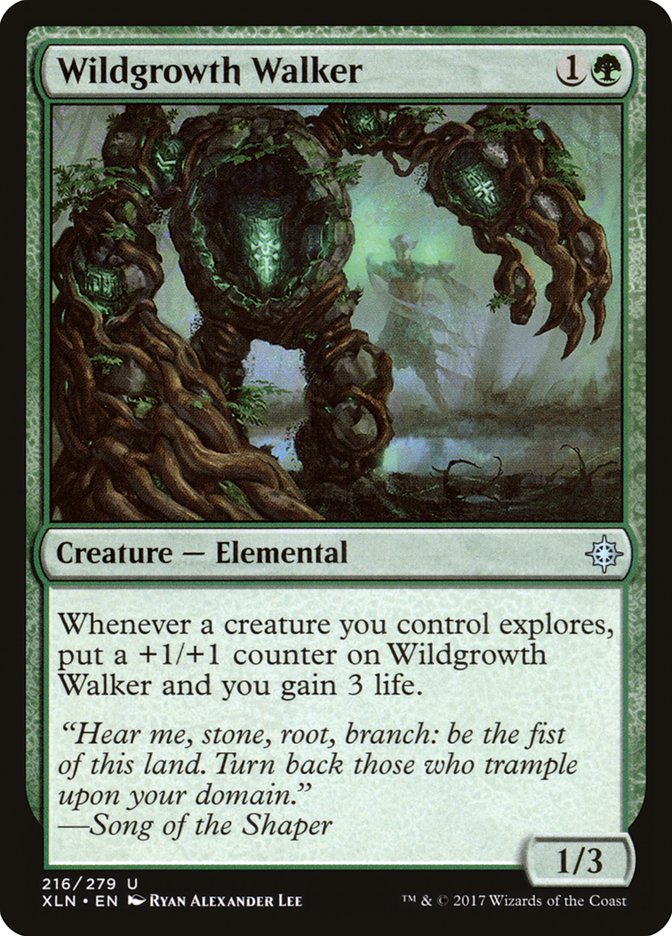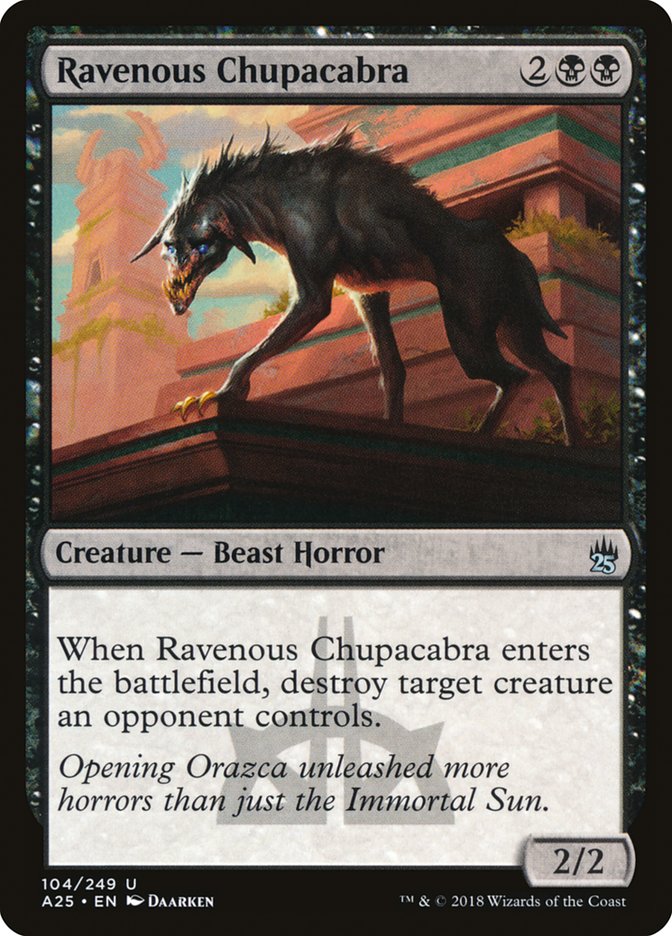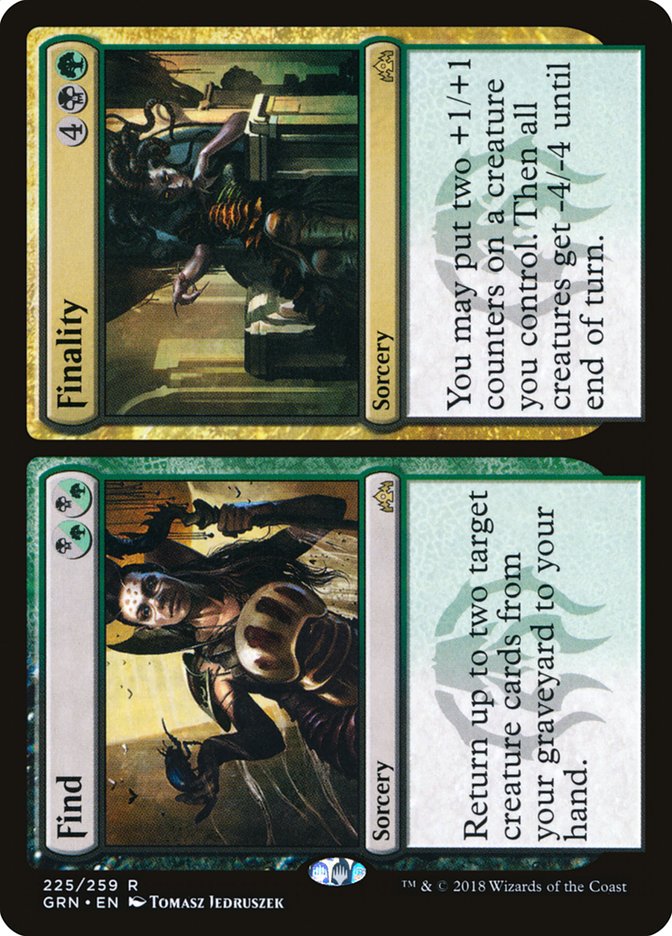Pelt Collector was one of the more hyped cards from Guilds of Ravnica. It compared favorably to Experiment One, a staple of its Standard era that even saw Modern play. Pelt Collector even had strong mono-green backing from Steel-Leaf Champion and Nullhide Ferox.
Then it just didn’t get there. The Golgari cards just wanted to be grindy midrange, and the Selesnya cards wanted to be a stack-your-pumps go-wide deck. Neither lends itself to a one-mana beater that’s a bad draw late-game.
Recently that has changed. If you’re trawling the Magic Online Leagues for testing, you have almost surely played against some variation of Pelt Collector, whether Mono-Green Aggro, Gruul, or tri-color. If you haven’t been, you must have noticed Shota Takao’s Gruul Aggro deck in the semifinals of Grand Prix Memphis.
In case you missed this quick metagame tick, here are the Gruul baselines.
Creatures (26)
- 3 Siege-Gang Commander
- 4 Rekindling Phoenix
- 3 Dire Fleet Daredevil
- 4 Goblin Chainwhirler
- 4 Gruul Spellbreaker
- 4 Growth-Chamber Guardian
- 4 Zhur-Taa Goblin
Lands (14)
Spells (20)

Creatures (30)
- 4 Llanowar Elves
- 4 Rekindling Phoenix
- 4 Legion Warboss
- 2 Kraul Harpooner
- 4 Pelt Collector
- 4 Gruul Spellbreaker
- 4 Growth-Chamber Guardian
- 4 Zhur-Taa Goblin
Lands (24)
Spells (6)
Sideboard

Why Gruul Now?
Since this Gruul deck is a pile of all threats, the reason it’s doing well has to be that it is a pile of extremely effective threats.
The initial push Gruul needed can be attributed to the rise of Mono-Blue Aggro.
While a lot of people are interested in how to dance the Dive Down / Cast Down dance against Mono-Blue Aggro, there’s another way to beat them, called “just go kill them.” This isn’t Azorius Aggro where a well-timed Essence Capture and Merfolk Trickster can collapse your Benalish house of cards. Your Pelt Collector into Zhur-Taa Goblin start is just big hitters.
If it just happens some of your bashing tools are anti-flying hate too, it’s not a bad thing. Kraul Harpooner was a card people identified early as pairing with Pelt Collector, but now it’s just something they want to eat Pteramander. You even have actual creature cards in your deck, unlike the Nexus of Fate decks featuring Kraul Harpooner, making it a kill spell against Enigma Drake and Tempest Djinn. Colossus is just a fine-rate pump spell, again similar to Gatecrash standout Ghor-Clan Rampager, but it kills Tempest Djinn or Enigma Drake.
Shota Takao’s list is also loaded with great ways to beat the Azorius or Boros Aggro decks that are rising up to fight Mono-Blue Aggro. Goblin Chainwhirler and Siege-Gang Commander are just the answers to their wide draws and why the prior Mono-Red Aggro decks were predators of those strategies. Instead of the card draw spells that Mono-Red Aggro uses to pile over their creatures, you just have more big stuff. While you may associate green with card advantage through cantrip creatures, the original green card advantage was that a 4/4 takes multiple 2/1s to block and kill.
Let’s continue this theme of good rates and good metagame spots. On the other side of the metagame spectrum lies Esper Control, and this deck is not without hits there. The entire plan against Kaya’s Wrath as a bulky beatdown deck is to expose just enough threats to make spot removal ineffective, force the Wrath, and pile on from there.
Making spot removal ineffective is easy from a pure mana perspective. This deck is just full of low-cost threats that demand a direct answer. You can’t keep taking Zhur-Taa Goblin hits for three, and you can’t keep Mortifying them and expecting to not get buried by mana and damage chip shots.
Riot is extremely effective at punishing the Kaya’s Wrath tap out. Growth-Chamber Guardian is also very good at setting up these spots, giving you an immediate threat that’s also a future threat. I also need to specifically call out Gruul Spellbreaker as great locked-in damage, often carrying a four-point Colossus hit with it.
Gruul can even field solid interaction against Nexus of Fate decks.
The best way to think about Nexus of Fate decks is similar to Modern Storm. Given enough time they can go off from nothing, but they need some permanent to stick to go off quickly. They can go off the turn they cast that permanent, but again there’s a time cost to that. In this case, that permanent is often Search for Azcanta or Wilderness Reclamation.
Cindervines cuts that off, importantly at almost no sunk mana cost on the turns you leave up the activation, all while chipping away at their life total.
I’ve also found Legion Warboss extremely effective against Nexus of Fate. Since they have no actual creature interaction, Legion Warboss just gets to go off. Unimpeded, it clocks faster than Steel-Leaf Champion with no help, letting you use your mana on Cindervines or whatever other interaction you want.
Just a reminder that Pelt Collector is also way better here than it has ever been. Riot alters how the Gruul creature enters the battlefield, causing it to trigger Pelt Collector at the larger size if you choose the +1/+1 counter mode. Previously explore worked the opposite way, and going from a Merfolk Branchwalker nonbo to a Zhur-Taa Goblin combo makes a world of difference.
Variation on a Theme
Creatures (32)
- 4 Llanowar Elves
- 1 Ripjaw Raptor
- 3 Ghalta, Primal Hunger
- 4 Steel Leaf Champion
- 4 Thorn Lieutenant
- 4 Nullhide Ferox
- 4 Pelt Collector
- 4 Gruul Spellbreaker
- 4 Zhur-Taa Goblin
Lands (22)
Spells (6)
Sideboard

If Colossus is an effective card, Thud can make it a doubly effective combo kill. Gruul Spellbreaker with haste and hexproof is a natural carrier for those effects, and Nullhide Ferox forces plays that open up avenues to these wins. This list is probably less attractive now that Mono-Blue Aggro punishes costly setup with Wizard’s Retort, yet is worth a closer look if the metagame shifts.
Creatures (34)
- 4 Llanowar Elves
- 3 Ghalta, Primal Hunger
- 4 Thrashing Brontodon
- 4 Steel Leaf Champion
- 4 Thorn Lieutenant
- 4 Nullhide Ferox
- 4 Kraul Harpooner
- 4 Pelt Collector
- 3 Biogenic Ooze
Lands (22)
- 22 Forest
Spells (4)
Sideboard

Listen, I’m basically never going to tell anyone to play Ghata, Primal Hunger unless Regisaur Alpha is involved. The card is only good in green mirrors, and if that’s the case, you should be playing Chupacabra Tribal (also known as Sultai Midrange) instead. But if you’re someone predisposed to 12/12 trampling creatures, this list does exist. Biogenic Ooze might be a better Siege-Gang Commander or Skarrgan Hellkite in the greener Gruul lists too, and Prey Upon is at least worth considering as a marginal removal spell over Shock.
Let’s keep moving.
Creatures (28)
- 4 Rekindling Phoenix
- 4 Goblin Chainwhirler
- 4 Kraul Harpooner
- 4 Pelt Collector
- 4 Gruul Spellbreaker
- 4 Growth-Chamber Guardian
- 4 Gutterbones
Lands (23)
Spells (9)
Sideboard

I want to highlight an aspect of Shota Takao’s deck here, considering Standard Unclaimed Territory manabases are basically a sub-brand of mine.
The sticking point of Shota’s mana is Goblin Chainwhirler. This is definitely worth it considering the idea of heavy hitter, matchup targeted threats to take down Azorius Aggro and Mono-Blue Aggro, but it messes with your other mana. You can’t play more than one or two sources that don’t cast it, but you also have green two-drops.
Goblin Chainwhirler is a Goblin Warrior. Zhur-Taa Goblin is a Goblin too, Gruul Spellbreaker is a Warrior and so is Growth-Chamber Guardian, even if it can’t adapt off Unclaimed Territory.
But that’s not where it ends! We can go deeper. This list is reverse-engineered from some Magic Online matches against at least one Platinum Pro-level opponent.
Pelt Collector is a Warrior. Gutterbones is a Warrior and a way better one-drop than Llanowar Elves in your heavy-red, 23-land aggro deck. Kraul Harpooner is a Warrior and a three-power two-drop for Pelt Collector.
The mana here is definitely ambitious because this deck is in the trial phase. Running only twenty lands to cast Goblin Chainwhirler is technically how Mono-Red Aggro lives its life, but you might encounter issues. Eight checklands with four Unclaimed Territory? Also not the best. Maybe this should also a be a Light Up the Stage deck, because Divinations are also mana fixing.
Inherent Issues
Gruul Aggro is not a difficult strategy to figure out. If the deck was super-good without context, we would have seen obvious Week 1 decks winning, especially since we had lists without Rhythm of the Wild that early.
What has held the deck back?
One of the issues across all the aggro decks in Standard is mitigating mana flood and mana screw. While you play four or five less lands than the midrange and control deck, random distributions aren’t perfect and sometimes you draw seven lands. Mono-Blue Aggro has Curious Obsession to handle this (partly by making some games where land count doesn’t matter), Mono-Red Aggro has Light Up the Stage and Experimental Frenzy, and Mono-White Aggro has History of Benalia.
Gruul Aggro has…. Rekindling Phoenix? Especially if you’re playing Pelt Collector, I would consider one of the red card advantage engines if this issue keeps popping up in testing.
On the mana screw side, this deck also has some minor issues. Your power is concentrated in your three-drops and four-drops. Hands with two lands can play for a bit, but there are diminishing returns on Gruul Spellbreaker and Goblin Chainwhirler just being good sizes on Turn 3. Pelt Collector’s incremental sizing is also cramped when your curve doesn’t pan out. Again, Light Up the Stage seems like a possible standout.
But the real issue might just be Sultai Midrange. Like I said with Ghalta, Primal Hunger, when Big Doofus Tribal fights Chupacabra Tribal, the winner is the two-for-one midrange deck. Gruul Spellbreaker might just run into a Jadelight Ranger and trade or, even worse, get brick walled by the Wildgrowth Walker that Jadelight Ranger made a 3/5.
You can’t just jam head-on into their cards, so you need to go around their strategy with single cards that ignore card advantage accumulation. This is why the existing lists lean so hard on Rekindling Phoenix, a tough-to-answer threat for Sultai, and why these decks probably need even more of that action. Steal ideas from both the red and green decks of the format. I’ve mentioned both Siege-Gang Commander and Biogenic Ooze for fatties, as well as Experimental Frenzy, but something starting in the three-drop slot would be great.
While this might seem like a daunting challenge, it’s important to look at this from the lens of what Gruul Aggro has accomplished. Gruul Aggro is a fairly new development, fighting against a Sultai-Golgari base with six months of hard tuning. It still made the semifinals of a Grand Prix and is still undergoing tons of small refinement. For a deck that just wants to bash and smash on the surface, that’s a great starting point to put in the hard work and come out with something really amazing.


